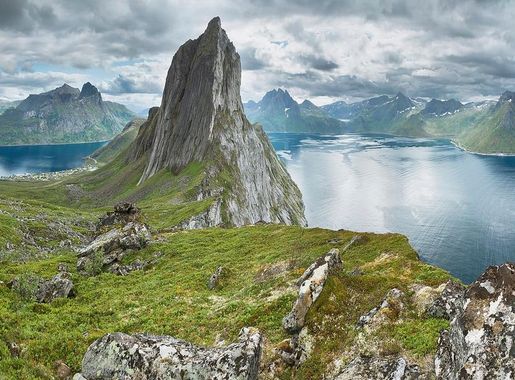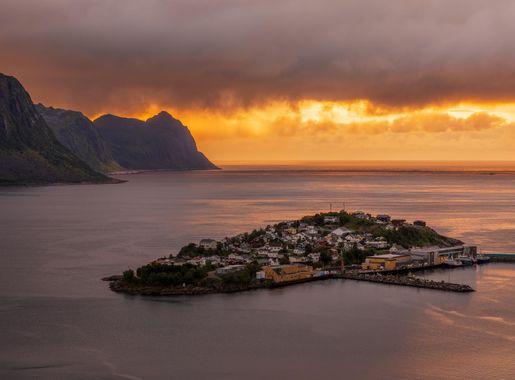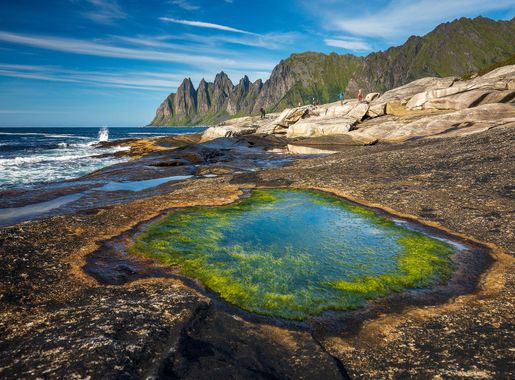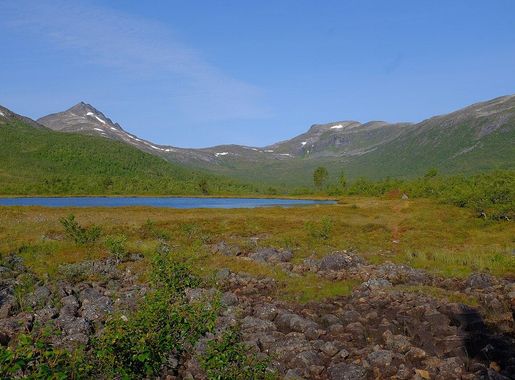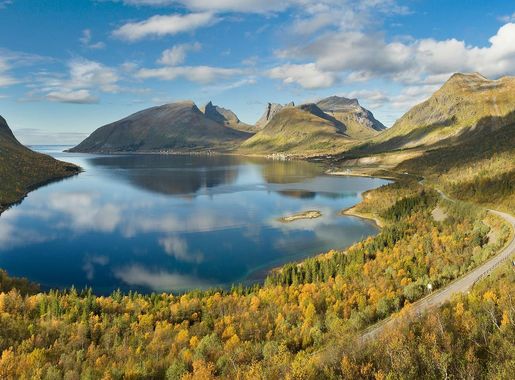
Senja Island: Norway's Hidden Gem
Discover the untouched beauty of Senja Island, Norway's hidden gem, boasting dramatic landscapes, rich wildlife, and charming fishing villages.
Senja Island, located in Northern Norway, is a paradise for nature lovers and adventure seekers. Known for its rugged coastlines, soaring mountains, and tranquil fjords, Senja offers some of the most breathtaking landscapes in the world. The island is often referred to as 'Norway in miniature' because it captures the essence of the country's natural beauty in one place. One of the highlights of Senja is the Senja National Tourist Route. This scenic drive takes you through some of the island's most stunning vistas, including dramatic cliffs, quaint fishing villages, and serene beaches. Along the route, you'll find plenty of opportunities to stop and explore, whether it's hiking up to panoramic viewpoints or taking a leisurely stroll along the shore. Senja is also a great destination for wildlife enthusiasts. The island is home to a diverse range of animals, including sea eagles, otters, and even whales. Birdwatchers will be delighted by the variety of species that can be spotted here, especially during the summer months when migratory birds flock to the area. For those looking to experience the local culture, Senja's charming villages offer a glimpse into traditional Norwegian life. You can visit local museums, sample fresh seafood at quaint restaurants, and even stay in traditional rorbuer (fishermen's cabins) for an authentic experience. The island's warm and welcoming residents are always happy to share their stories and traditions with visitors.
Local tips in Senja Island
- Visit during the summer months for the best weather and the chance to see migratory birds.
- Bring sturdy hiking boots as many trails can be rugged and steep.
- Rent a car to fully explore the Senja National Tourist Route at your own pace.
- Don't miss tasting the local seafood, especially the freshly caught fish.
- Stay in a traditional rorbu for an authentic Norwegian experience.
Senja Island: Norway's Hidden Gem
Senja Island, located in Northern Norway, is a paradise for nature lovers and adventure seekers. Known for its rugged coastlines, soaring mountains, and tranquil fjords, Senja offers some of the most breathtaking landscapes in the world. The island is often referred to as 'Norway in miniature' because it captures the essence of the country's natural beauty in one place. One of the highlights of Senja is the Senja National Tourist Route. This scenic drive takes you through some of the island's most stunning vistas, including dramatic cliffs, quaint fishing villages, and serene beaches. Along the route, you'll find plenty of opportunities to stop and explore, whether it's hiking up to panoramic viewpoints or taking a leisurely stroll along the shore. Senja is also a great destination for wildlife enthusiasts. The island is home to a diverse range of animals, including sea eagles, otters, and even whales. Birdwatchers will be delighted by the variety of species that can be spotted here, especially during the summer months when migratory birds flock to the area. For those looking to experience the local culture, Senja's charming villages offer a glimpse into traditional Norwegian life. You can visit local museums, sample fresh seafood at quaint restaurants, and even stay in traditional rorbuer (fishermen's cabins) for an authentic experience. The island's warm and welcoming residents are always happy to share their stories and traditions with visitors.
When is the best time to go to Senja Island?
Iconic landmarks you can’t miss
Hamn i Senja, Senja Reiseliv (Senja Travel)
Experience the breathtaking beauty of Hamn i Senja, where outdoor adventures and traditional Norwegian cuisine await in a stunning natural setting.
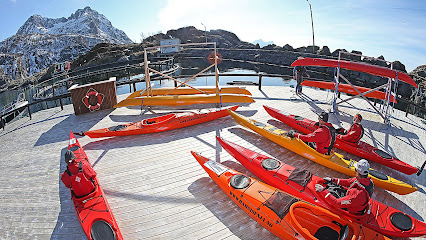
Tungeneset
Explore Tungeneset, Norway's breathtaking coastal attraction with stunning views, hiking trails, and unique wildlife experiences.
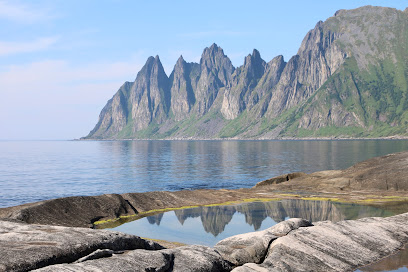
Senja
Explore Senja, Norway's breathtaking island known for its stunning landscapes, diverse wildlife, and enchanting cultural experiences.
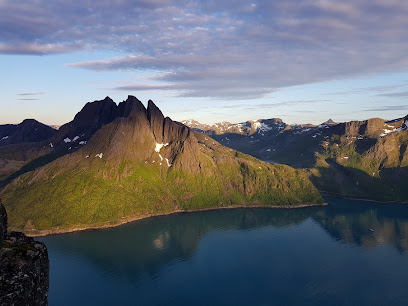
Ersfjord Beach
Discover the enchanting Ersfjord Beach, a serene paradise in Norway's Arctic coast, perfect for relaxation and breathtaking scenery.
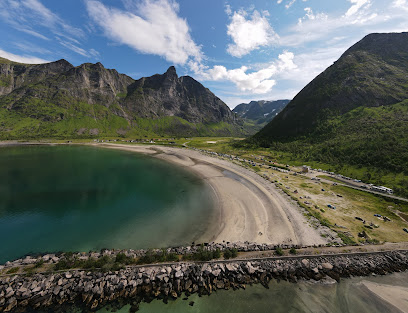
Bergsbotn utsiktsplattform
Discover the breathtaking views at Bergsbotn Utsiktsplattform, a must-visit scenic spot in Skaland, Norway, offering unforgettable landscapes and serene experiences.
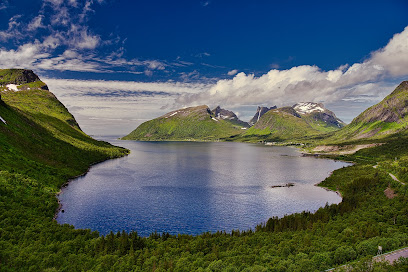
Norwegian Wild
Experience the beauty and tranquility of nature at Norwegian Wild, your perfect camping destination in Vangsvik, Norway.
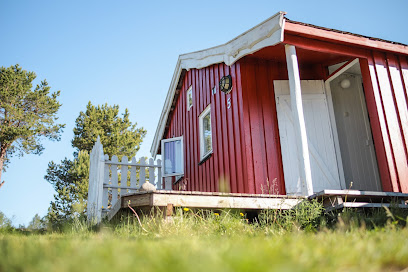
Hesten trail head
Discover the breathtaking Hesten Trail Head in Fjordgård, Norway, a hiker's paradise with stunning views and diverse landscapes.
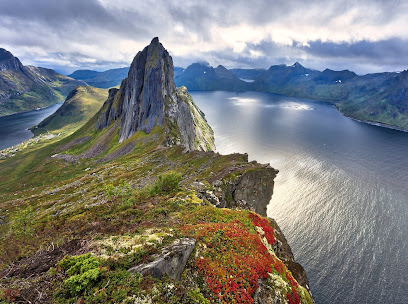
Sommarøy
Discover the serene beauty of Sommarøy, Norway's idyllic island with stunning beaches, outdoor adventures, and a vibrant local culture.
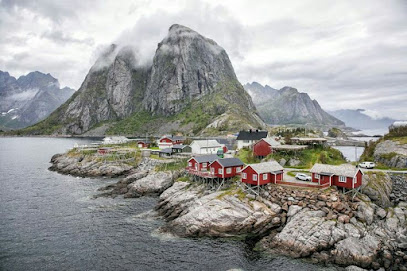
Husøy
Discover Husøy, the serene island in Senja known for its stunning landscapes, rich marine life, and authentic Norwegian fishing village charm.
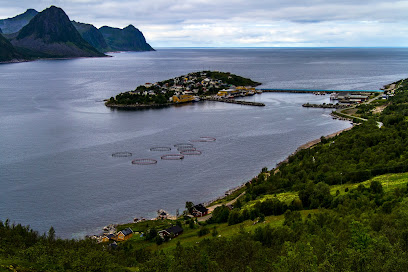
Hesten
Discover Hesten: A breathtaking hiking area in Fjordgard, Norway, offering stunning views and diverse trails for all adventure seekers.
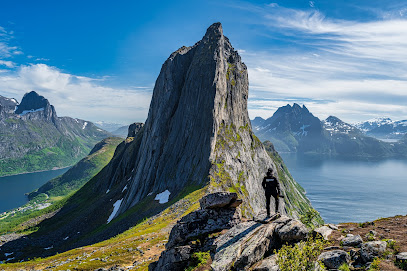
Ånderdalen National Park
Experience the pristine wilderness of Ånderdalen National Park, a natural gem on Senja, Norway, perfect for hiking, wildlife watching, and breathtaking landscapes.
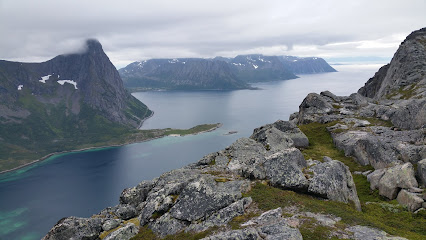
Knuten Trail Head
Explore the stunning Knuten Trail Head in Senjahopen, Norway, where breathtaking fjord views and serene nature await every adventurer.
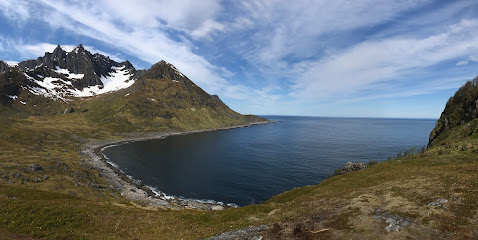
Angeln auf Senja-West
Discover the best fishing experience on Senja-West, surrounded by Norway's stunning natural beauty and rich marine life.
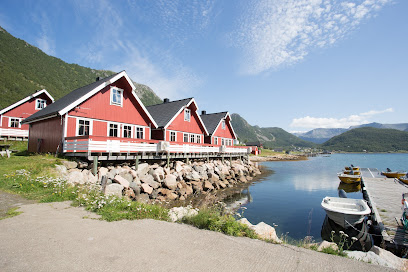
Husøy Lighthouse
Experience the breathtaking coastal views and rich maritime history at Husøy Lighthouse in beautiful Senja, Norway.

Husfjellet
Explore the stunning Husfjellet in Skaland, Norway, where breathtaking panoramic views and unforgettable hiking experiences await nature lovers.
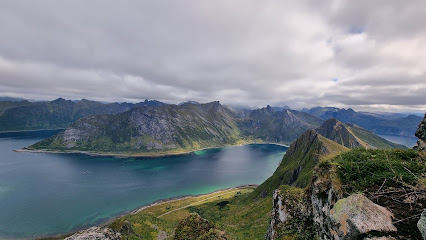
Unmissable attractions to see
Tungeneset
Discover the stunning views and natural beauty of Tungeneset, a breathtaking coastal attraction on Senja Island, Norway.
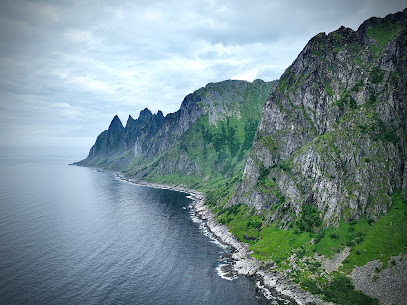
Bergsbotn utsiktsplattform
Experience the stunning beauty of Norway at Bergsbotn Utsiktsplattform, a must-visit scenic spot in Skaland for breathtaking views and serene nature.
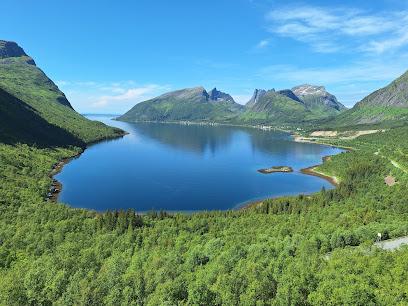
Norwegian Wild
Discover Norwegian Wild: Your gateway to breathtaking landscapes, outdoor adventures, and serene cottage retreats in Vangsvik, Norway.
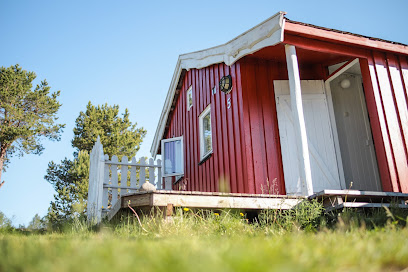
Hesten trail head
Explore the stunning Hesten Trail Head in Fjordgård, Norway, where breathtaking views and diverse hiking trails await every adventurer.

Segla
Discover the breathtaking beauty of Segla, a majestic mountain peak in Norway, offering stunning views and unforgettable hiking experiences.

Senja Husky Adventure AS
Discover the breathtaking landscapes of Senja Island with an exhilarating dogsledding adventure at Senja Husky Adventure AS.
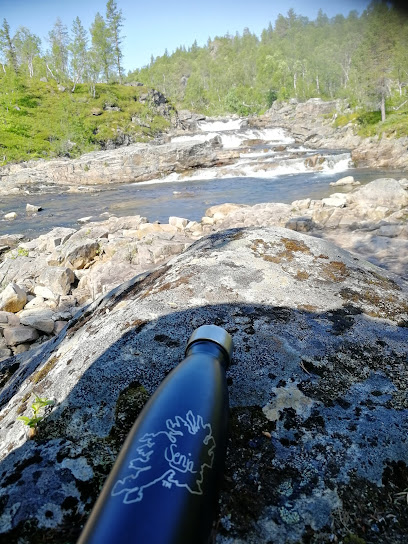
Ånderdalen National Park
Explore the breathtaking natural beauty of Ånderdalen National Park, a serene escape on the stunning island of Senja, Norway.
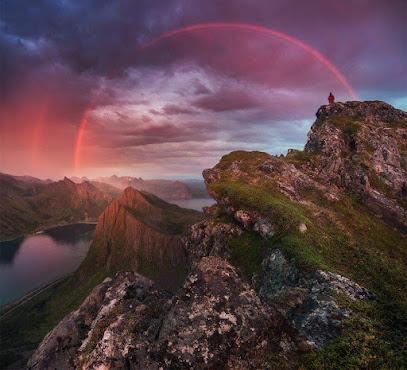
Hesten
Explore the picturesque hiking trails of Hesten in Fjordgard, Norway, where stunning views and natural beauty await every adventurer.
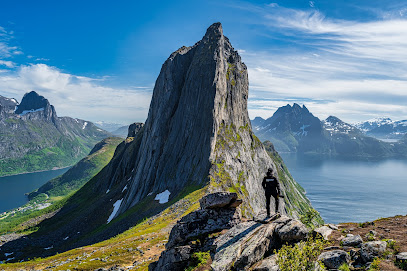
Snyfjellet Gård
Explore Snyfjellet Gård, a serene animal park on Senja offering unique wildlife encounters and stunning natural landscapes for an enriching family experience.
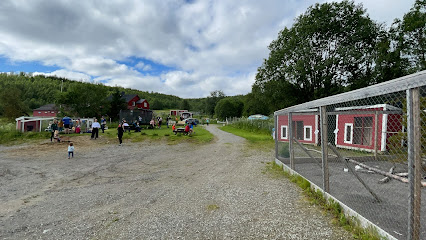
Ånderdalen National Park
Explore the stunning landscapes and diverse wildlife of Ånderdalen National Park on the beautiful island of Senja, Norway.
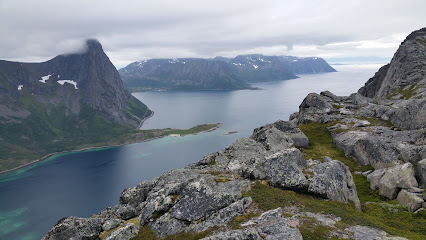
Knuten Trail Head
Explore the breathtaking trails of Knuten Trail Head in Senjahopen, Norway - a paradise for hikers and nature lovers alike.
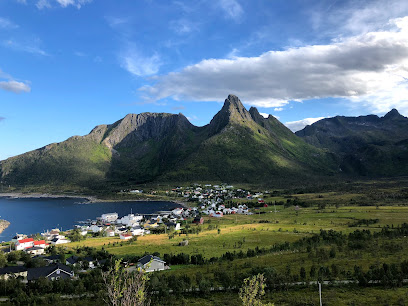
Husøy Lighthouse
Explore the stunning Husøy Lighthouse in Senja, a historic landmark offering breathtaking views and a glimpse into Norway's maritime past.
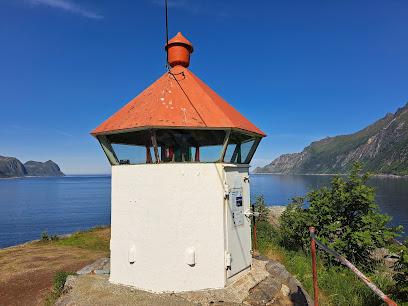
Angeln auf Senja-West
Experience the thrill of fishing in the breathtaking landscapes of Senja-West, Norway, where adventure meets natural beauty.

Husfjellet
Discover the breathtaking vistas and serene trails of Husfjellet, a hiker's paradise on the stunning Senja Island in Norway.
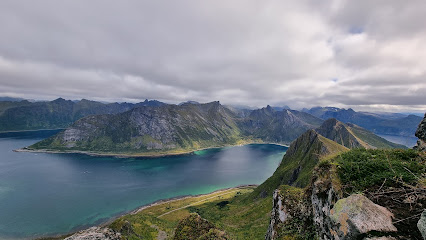
Sukkertoppen Trail Head
Discover the breathtaking beauty of Sukkertoppen Trail Head, a premier hiking destination in Norway, perfect for nature lovers and adventurers.
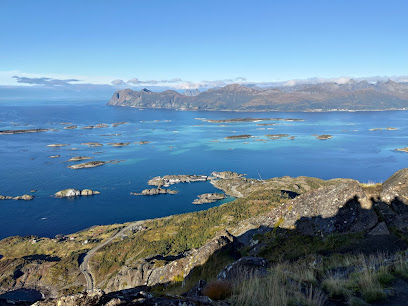
Essential places to dine
Hamn i Senja, Senja Reiseliv (Senja Travel)
Experience the natural beauty and rich culture at Hamn i Senja - your gateway to unforgettable adventures in Norway.
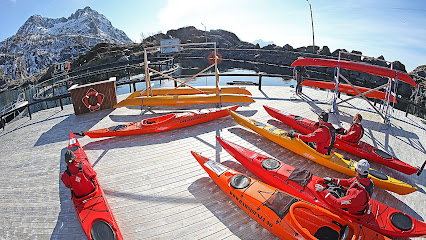
Mefjord Brygge
Experience breathtaking views and authentic Norwegian hospitality at Mefjord Brygge in scenic Senjahopen.

Senjastua
Discover authentic Norwegian flavors at Senjastua in Silsand – where tradition meets taste in every dish.
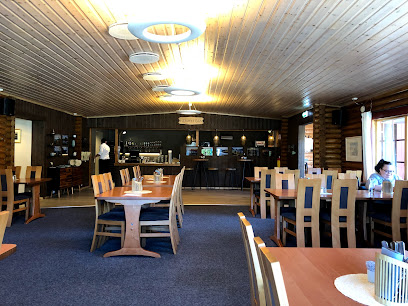
Segla Grill and Pub
Discover mouthwatering grilled dishes with stunning fjord views at Segla Grill and Pub in Fjordgard.
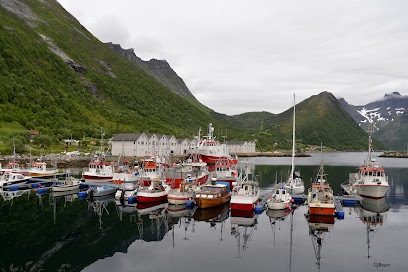
Senja Fjordhotell
Experience authentic Norwegian cuisine with stunning fjord views at Senja Fjordhotell - a hidden gem for food lovers.
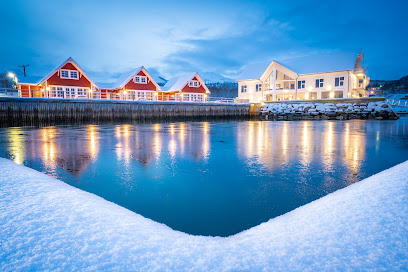
Skagi Senja hotel & lodge - Flo bord og bar
Experience the perfect blend of comfort and adventure at Skagi Senja Hotel & Lodge – your gateway to Norway's breathtaking landscapes.
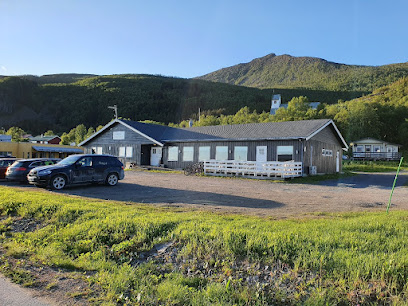
Hugos Pub / Senja Uteliv AS
Discover the lively atmosphere at Hugos Pub in Finnsnes—where great food meets unforgettable live music in Norway's charming setting.
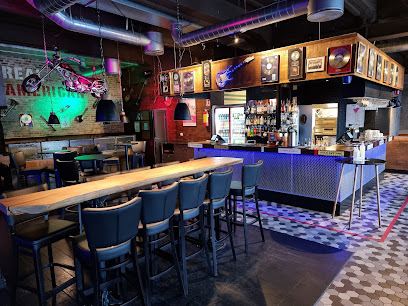
Senja By Heart - Restaurant
Experience authentic Norwegian cuisine at Senja By Heart - where local flavors meet breathtaking views.
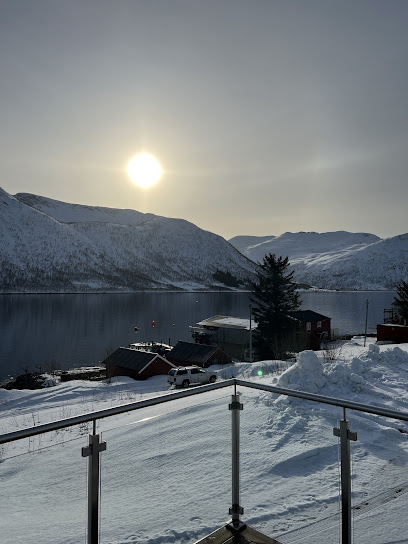
Fjøsn Restaurant & Bar
Discover authentic Norwegian flavors at Fjøsn Restaurant & Bar in Silsand - a delightful dining experience awaits you.
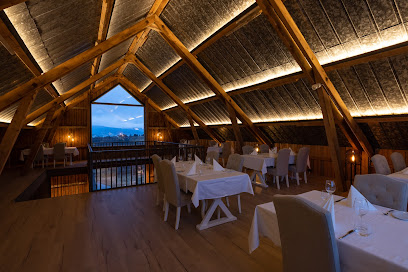
The Fat Cod
Experience authentic Norwegian cuisine at The Fat Cod in Skaland, where fresh seafood meets stunning fjord views.
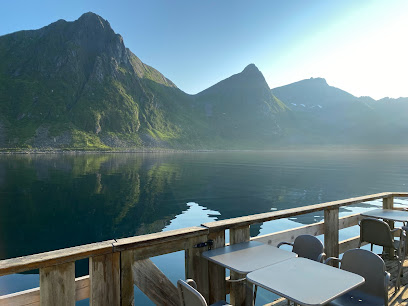
Draugen Kro&Bar Pizzeria
Experience culinary bliss at Draugen Kro & Bar Pizzeria in Medby - where authentic flavors meet warm hospitality.
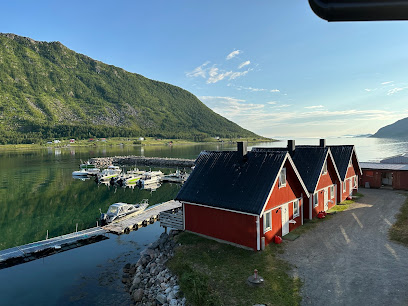
Senja matstudio
Discover culinary delights at Senja Matstudio in Skaland – where local flavors meet stunning landscapes for an unforgettable dining experience.
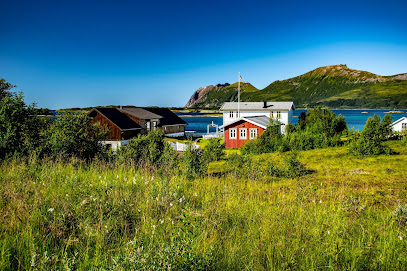
Salteriet Restaurant & Bar
Experience authentic Norwegian cuisine at Salteriet Restaurant & Bar in Senjahopen – where local flavors meet breathtaking coastal views.
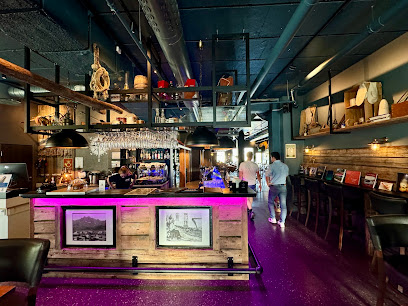
Storbrygga Spiseri
Experience local Norwegian cuisine with stunning fjord views at Storbrygga Spiseri in Skaland.
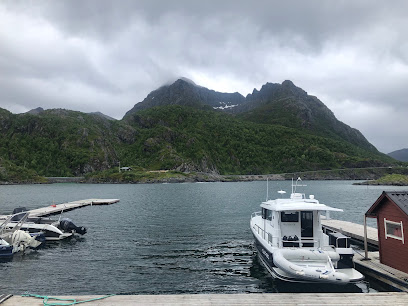
BJA Holding AS
Discover authentic Norwegian cuisine at BJA Holding AS in Kaldfarnes - where local flavors meet exceptional hospitality.
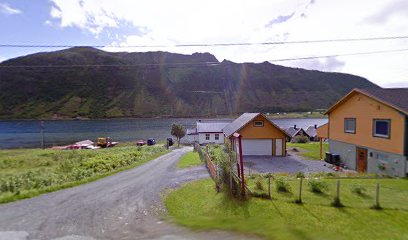
Markets, malls and hidden boutiques
AMFI Finnsnes
Experience shopping like never before at AMFI Finnsnes, the ultimate destination for retail therapy in the heart of Norway.
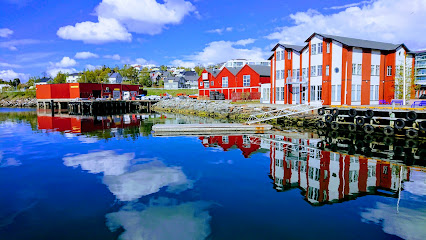
Clas Ohlson
Explore Clas Ohlson in Finnsnes for top-quality home improvement essentials, electronics, and much more to enhance your everyday living.
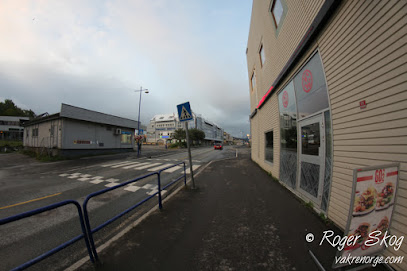
Extra Olderhamna
Discover the best local flavors at Extra Olderhamna, a premier grocery store in Finnsnes, Norway, offering fresh produce and unique Norwegian delicacies.
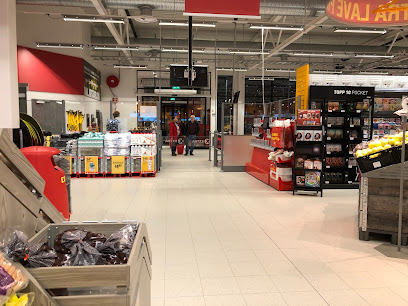
Joker Skaland
Experience the local charm at Joker Skaland, a grocery store in Skaland offering fresh produce and unique Norwegian products for your journey.
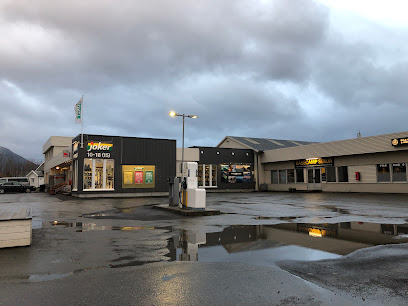
Bakery Nostalgia AS
Discover the warm, inviting atmosphere of Bakery Nostalgia AS in Silsand, where traditional baking meets modern taste for an unforgettable treat.
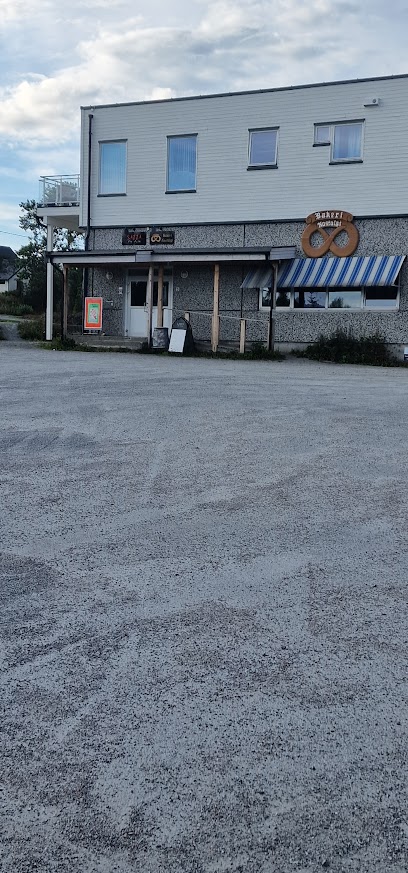
Joker
Explore Joker Grocery Store in Stonglandseidet for fresh produce, local delicacies, and a taste of Norwegian culture.

Matkroken Senjahopen
Discover fresh and local flavors at Matkroken Senjahopen, your go-to supermarket in the heart of Norway's scenic Senjahopen.
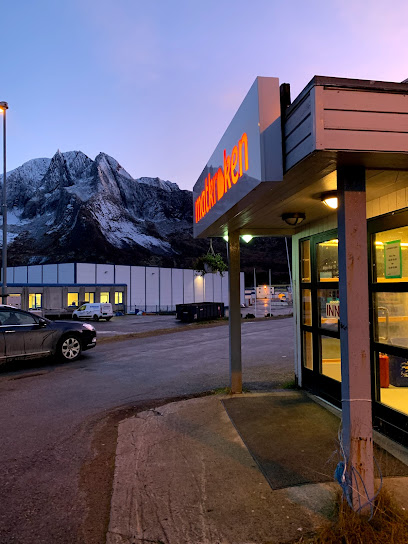
Senja Husky Adventure AS
Explore the breathtaking wilderness of Vangsvik with Senja Husky Adventure, where thrilling dogsled rides meet stunning Arctic landscapes.
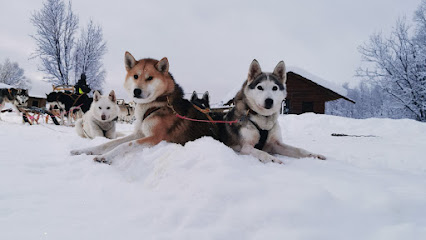
Joker Husøy
Explore Joker Husøy – a charming grocery store in Senja offering local delights and international favorites for your culinary adventures.
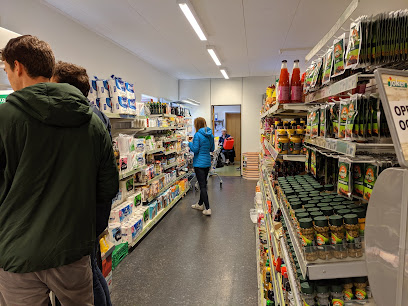
JYSK Finnsnes
Explore JYSK Finnsnes for quality furniture, bedding, and outdoor decor in the heart of Norway, perfect for bringing home a touch of Scandinavian style.
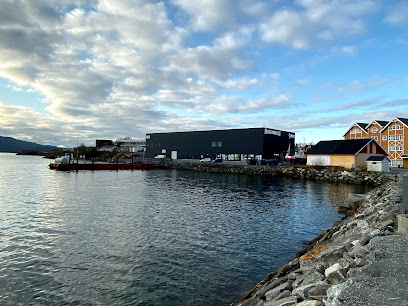
Nærbutikken Fjordgård Supermarket
Experience the essence of Norway with local products at Nærbutikken Fjordgård Supermarket, where quality meets community spirit.
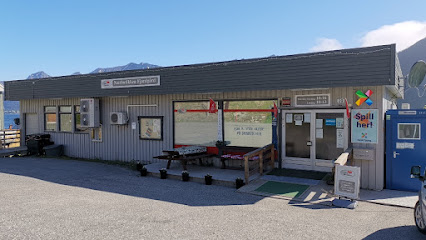
Senjahuset
Discover the cozy charm of Senjahuset, a welcoming coffee shop amidst the stunning landscapes of Senja Island, Norway.
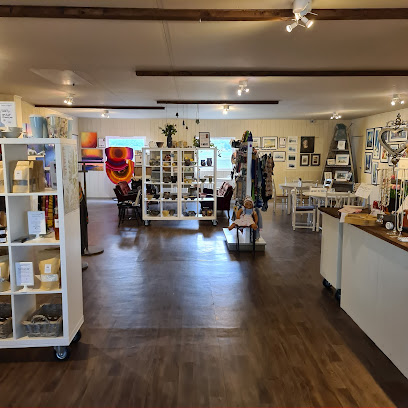
BmShop - Bakkan Multi Shop
Explore BmShop - Bakkan Multi Shop in Sørreisa for unique home goods and local craftsmanship, perfect for souvenirs and essentials alike.
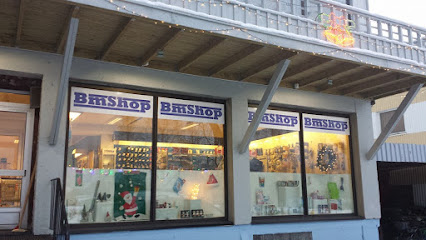
Gammelbutikken i Skrolsvik
Discover the hidden gem of Gammelbutikken i Skrolsvik, where history, art, and local crafts come alive in the heart of Senja.
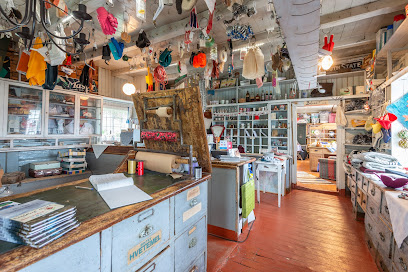
On The Corner
Discover unique gifts and local artistry at On The Corner, a charming gift shop in the heart of Finnsnes, Norway.
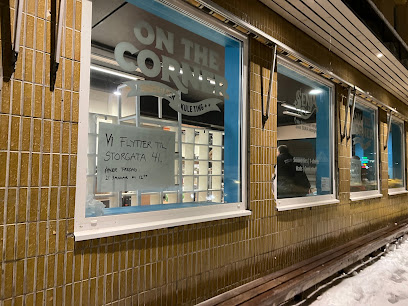
Essential bars & hidden hideouts
Hamn i Senja, Senja Reiseliv (Senja Travel)
Explore the captivating beauty and rich culture of Hamn i Senja, a premier resort hotel in Norway offering outdoor adventures and traditional Norwegian cuisine.

Mefjord Brygge
Experience the charm of Mefjord Brygge in Senja, where stunning landscapes meet authentic Norwegian hospitality and adventure.

Senjastua
Explore the flavors of Norway at Senjastua, where local ingredients meet stunning island views in a cozy dining setting.
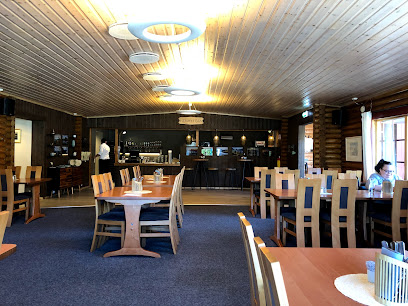
Segla Grill and Pub
Discover the flavors of Norway at Segla Grill and Pub in Fjordgard, where great food meets stunning views in a cozy atmosphere.
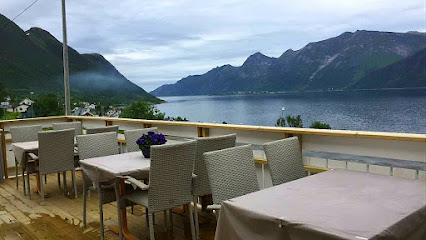
Senja Fjordhotell
Experience the flavors of Norway at Senja Fjordhotell, where exquisite dining meets breathtaking fjord views.

Skagi Senja hotel & lodge - Flo bord og bar
Discover Skagi Senja Hotel & Lodge: a cozy retreat with delicious dining and stunning outdoor adventures in Northern Norway.
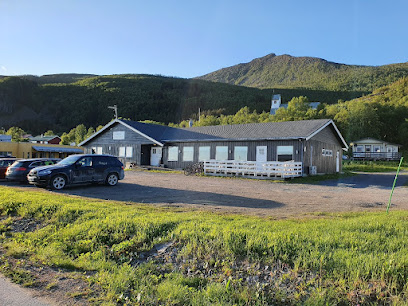
Hugos Pub / Senja Uteliv AS
Discover the lively atmosphere of Hugo's Pub in Finnsnes, where live blues, delicious pizza, and great drinks create an unforgettable night.
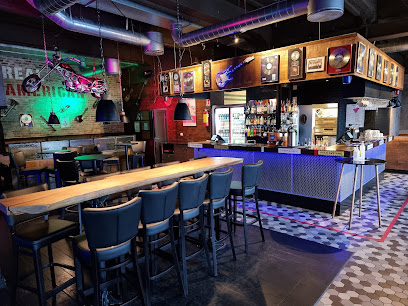
Mea Pub
Discover the local nightlife at Mea Pub, a vibrant bar in Andenes offering a diverse selection of drinks and an inviting atmosphere for all.
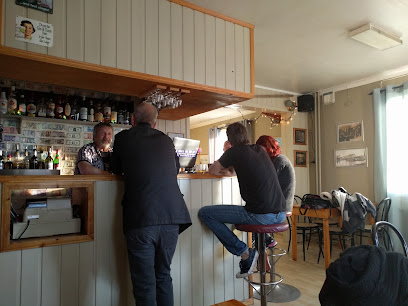
Otto's Pub
Discover Otto's Pub in Finnsnes: a vibrant gastropub with live music, tasty pizzas, and an unforgettable nightlife experience.
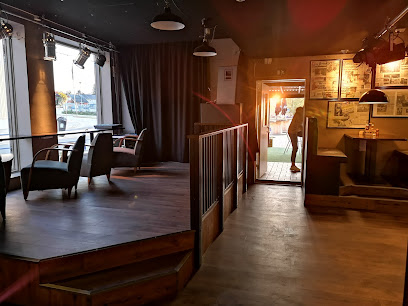
Senja By Heart - Restaurant
Experience the essence of Norwegian cuisine at Senja By Heart, where local flavors meet stunning landscapes.

Senja hotel
Discover the captivating beauty of Finnsnes while enjoying a comfortable stay at Senja Hotel, your gateway to northern Norway's stunning landscapes.
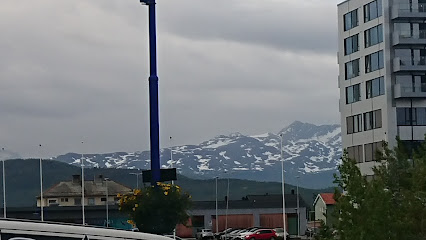
Smithy Pub & Cafe
Unwind at Smithy Pub & Cafe in Bleik, Norway, where stunning views and local flavors create an unforgettable experience.
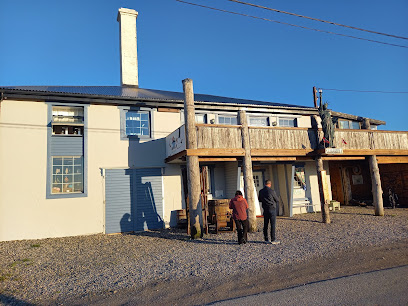
Vertshuset Gibostad
Discover the authentic flavors of Norway at Vertshuset Gibostad, where local ingredients meet cozy ambiance in the heart of Gibostad.
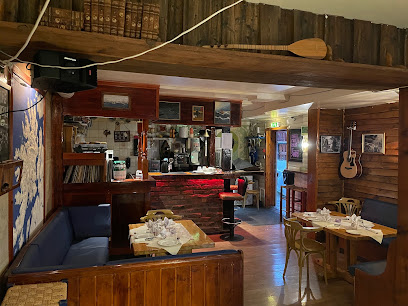
Pila Pub AS Skaland
Discover the charm of Pila Pub AS in Skaland, a cozy bar offering a delightful taste of Norwegian hospitality and local drinks in a friendly atmosphere.
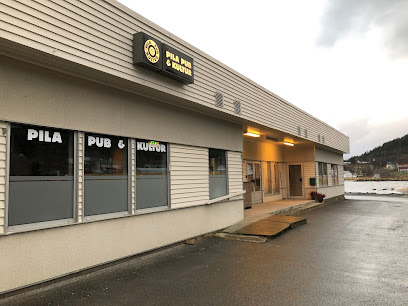
Fjøsn Restaurant & Bar
Discover the flavors of Norway at Fjøsn Restaurant & Bar, where local ingredients meet warm hospitality in a cozy setting.
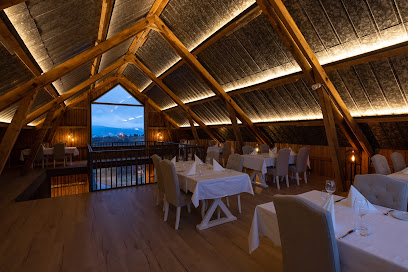
Local Phrases about Senja Island
-
- HelloHei
[hay] - GoodbyeHa det bra
[ha deh brah] - YesJa
[yah] - NoNei
[nay] - Please/You're welcomeVær så god
[vair soh goh] - Thank youTakk
[tahk] - Excuse me/SorryUnnskyld
[oon-shuld] - How are you?Hvordan har du det?
[vor-dan har doo deh] - Fine. And you?Bra. Og du?
[brah oh doo] - Do you speak English?Snakker du engelsk?
[snah-ker doo eng-elsk] - I don't understandJeg forstår ikke
[yay for-stor ee-neh]
- HelloHei
-
- I'd like to see the menu, pleaseJeg vil gjerne se menyen, takk
[yay vil yern-eh seh men-yen, tahk] - I don't eat meatJeg spiser ikke kjøtt
[yay spee-ser ee-neh chut] - Cheers!Skål!
[skohl] - I would like to pay, pleaseJeg vil gjerne betale, takk
[yay vil yern-eh bet-ah-leh, tahk]
- I'd like to see the menu, pleaseJeg vil gjerne se menyen, takk
-
- Help!Hjelp!
[yelp] - Go away!Gå vekk!
[gow vek] - Call the Police!Ring politiet!
[ring po-lee-teet] - Call a doctor!Ring en lege!
[ring en leh-geh] - I'm lostJeg er vil
[yay air veeld] - I'm illJeg er syk
[yay air sook]
- Help!Hjelp!
-
- I'd like to buy...Jeg vil kjøpe...
[yay vil chur-peh] - I'm just lookingJeg bare ser
[yay bah-reh seer] - How much is it?Hvor mye koster det?
[vor mew-eh kost-er deh] - That's too expensiveDet er for dyrt
[deh air for deert] - Can you lower the price?Kan du senke prisen?
[kahn doo sen-keh pree-sen]
- I'd like to buy...Jeg vil kjøpe...
-
- What time is it?Hva er klokka?
[vah air klok-ah] - It's one o'clockKlokka er ett
[klok-ah air et] - Half past (10)Halv ti
[hahlv tee] - MorningMorgen
[mor-gen] - AfternoonEttermiddag
[et-ter-mee-dahg] - EveningKveld
[kveld] - YesterdayI går
[ee gor] - TodayI dag
[ee dahg] - TomorrowI morgen
[ee mor-gen] - 1En
[en] - 2To
[too] - 3Tre
[treh] - 4Fire
[feer-eh] - 5Fem
[fem] - 6Seks
[seks] - 7Syv
[soov] - 8Åtte
[ot-teh] - 9Ni
[nee] - 10Ti
[tee]
- What time is it?Hva er klokka?
-
- Where's a/the...?Hvor er...
[vor air] - What's the address?Hva er adressen?
[vah air ah-dress-en] - Can you show me (on the map)?Kan du vise meg (på kartet)?
[kahn doo vee-seh meh (poh kar-teh)] - When's the next (bus)?Når går neste (buss)?
[nahr gor neh-steh (boos)] - A ticket (to ....)En billett (til ....)
[en bee-let (teel)]
- Where's a/the...?Hvor er...
History of Senja Island
-
Senja Island holds significant traces of the Viking Age, with numerous archaeological sites and findings that shed light on the island's past. During the Viking era, Senja was a crucial maritime hub, serving as a stopover for Viking longships navigating the northern seas. The island's strategic location made it an essential part of various trade routes connecting Scandinavia with other parts of Europe.
-
In the medieval period, the fertile fishing grounds surrounding Senja Island played a pivotal role in the local economy. Villages like Husøy and Gryllefjord became central to the cod fishing industry. The fishing techniques and traditions developed during this time have been passed down through generations and continue to influence the local culture today.
-
Senja Island, like much of Norway, was occupied by German forces during World War II. The island's strategic location made it a key point of interest for the occupying forces. Remnants of German fortifications, bunkers, and other military structures can still be found scattered across the island, serving as poignant reminders of this turbulent period.
-
The indigenous Sami people have a long history on Senja Island, with their cultural practices deeply rooted in the region. Traditional Sami livelihoods, such as reindeer herding and fishing, are still evident on the island. The Sami influence is reflected in local festivals, handicrafts, and the use of the Sami language, enriching the cultural tapestry of Senja.
-
Following the end of World War II, Senja Island underwent significant development. Infrastructure improvements, including the construction of roads and bridges, connected the island more effectively with the mainland. This period also saw growth in the tourism industry, as visitors began to explore the island's stunning landscapes and rich cultural heritage.
-
In recent decades, Senja Island has emerged as a popular destination for eco-tourism and outdoor activities. Efforts to preserve the island's natural beauty and biodiversity have led to the establishment of conservation areas and national parks. Modern tourism on Senja emphasizes sustainable practices, ensuring that the island's pristine environments are maintained for future generations to enjoy.
Senja Island Essentials
-
Senja Island is located in Northern Norway and is accessible via several means of transportation. The nearest airport is Bardufoss Airport (BDU), approximately 70 kilometers away. From Bardufoss, you can rent a car or take a bus to Senja. Alternatively, Tromsø Airport (TOS) is about 180 kilometers away and offers more international flights. From Tromsø, you can also rent a car or take a bus. For those preferring to travel by sea, there are ferries connecting the island to the mainland, specifically from the town of Gryllefjord to Andenes in the summer months.
-
Senja Island has a well-maintained road network, making car rental a popular option for tourists. Public buses operate on the island, connecting major towns and tourist attractions, though schedules can be limited, especially on weekends. Cycling is also popular, given the scenic routes. For a more localized experience, taxis are available but can be costly. Ferries and boats are used to explore the surrounding islands and fjords.
-
The official currency in Norway is the Norwegian Krone (NOK). Credit and debit cards are widely accepted, even for small transactions. It's advisable to carry some cash for smaller establishments and rural areas. ATMs are available in larger towns like Finnsnes and Silsand. Mobile payments like Vipps are also commonly used by locals.
-
Senja Island is generally very safe for tourists. Crime rates are low, and violent crime is rare. However, it's always wise to take standard precautions. Avoid leaving valuables in plain sight in your car and keep an eye on personal belongings in crowded areas. There are no specific high-crime areas targeting tourists on the island.
-
In case of an emergency, dial 112 for police, fire, and medical services. Medical facilities are available in larger towns like Finnsnes, which has a hospital. It is advisable to have travel insurance that covers medical emergencies. Pharmacies can be found in most towns for minor health issues. For emergencies at sea, contact the Norwegian Sea Rescue Society.
-
Fashion: Do dress in layers, as the weather can change rapidly. Waterproof clothing is essential. Avoid overly flashy attire. Religion: Do respect local customs and traditions, especially when visiting churches. Remove hats and speak softly. Public Transport: Do be punctual and respectful. It's customary to greet the driver when boarding. Don't eat or drink on public transport. Greetings: Do greet people with a firm handshake and maintain eye contact. A friendly smile is appreciated. Eating & Drinking: Do try local dishes like 'bacalao' and 'klippfisk'. Don’t refuse offers of food or drink as it can be considered impolite.
-
To experience Senja Island like a local, visit small fishing villages such as Husøy and Gryllefjord. Engage with locals, who are generally friendly and willing to share stories about their way of life. Don't miss the Senja National Tourist Route, which offers stunning views and architectural viewpoints. For a unique experience, participate in local festivals and events, such as the Senja Festival in summer. Hiking is a favored activity, so exploring trails like Segla and Hesten can provide a true taste of the island's natural beauty.
Nearby Cities to Senja Island
-
Things To Do in Bodø
-
Things To Do in Luleå
-
Things To Do in Rovaniemi
-
Things To Do in Oulu
-
Things To Do in Östersund
-
Things To Do in Vaasa
-
Things To Do in Trondheim
-
Things To Do in Kuopio
-
Things To Do in Jyväskylä
-
Things To Do in Molde
-
Things To Do in Tampere
-
Things To Do in Ålesund
-
Things To Do in Savonlinna
-
Things To Do in Lahti
-
Things To Do in Turku

